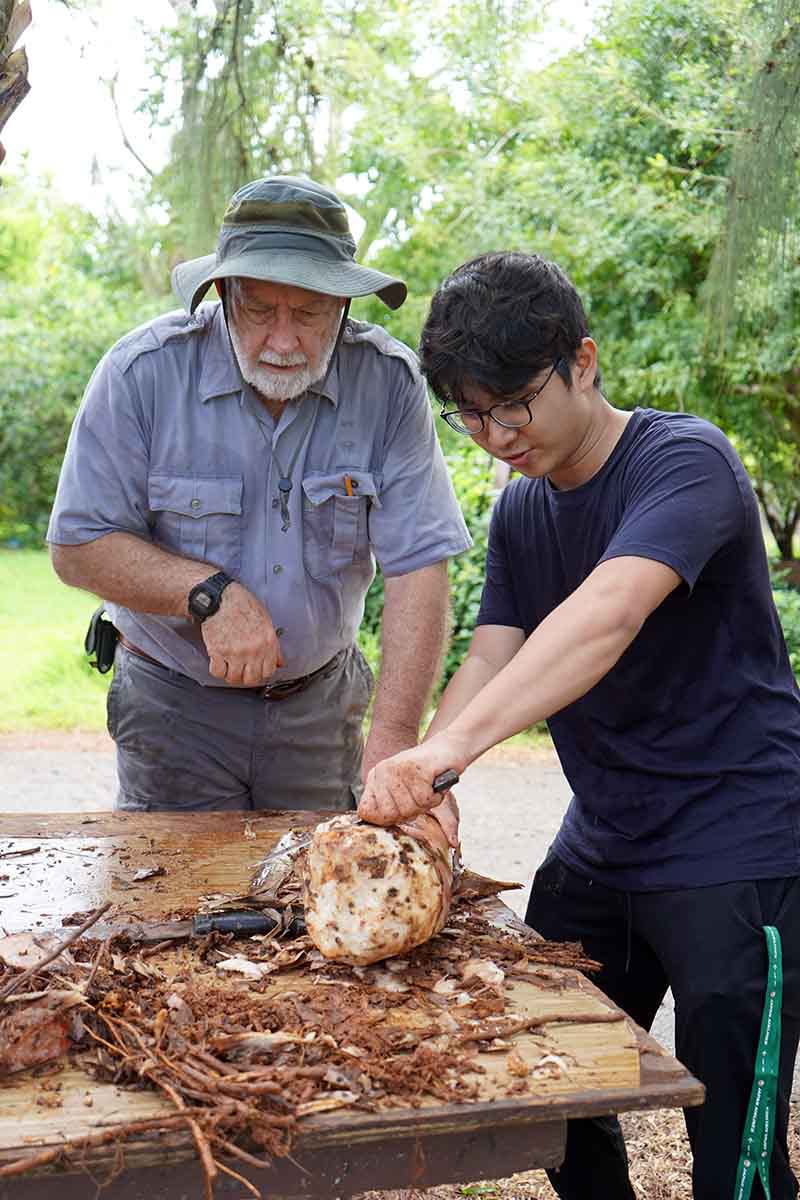- Home
-
Admissions
-
Academics
-
Students
-
Research
-
Research Centers
- Cancer Research Center
- Center for Excellence in Development Disabilities Education, Research & Service (CEDDERS)
- Center for Island Sustainability (CIS)
- Marine Laboratory
- Micronesian Area Research Center (MARC)
- UOG Land Grant | agInnovation Research Center
- Water and Environmental Research Institute (WERI)
-
Programs and Departments
- Guam EPSCOR
- Guma' Tinemtom - Micronesia Data Laboratory
- Pacific Islands Climate Adaptation Science Center (PI-CASC)
- Pacific Islands Cohort on Cardiometabolic Health (PICCAH)
- Research Corporation of UOG
- RFK Memorial Library
- UOG Press
- UOG Sea Grant
- University Libraries Digital Team
- NASA Guam Space Grant
- NASA Guam EPSCoR
-
Research Centers
-
Outreach
- Giving
- Alumni
-
About
Intro to Agriculture students learn proper banana propagation
Intro to Agriculture students learn proper banana propagation
Intro to Agriculture students learn proper banana propagation
9/22/2022







Intro to Agriculture (AL-101) students spent the morning of Sept. 21 at the Inarajan Research & Education Center learning how to propagate banana plants without spreading pests and viruses.

The suckers that the students harvested will be planted on Triton Farm and on the UOG campus, where they will be used for sustainable agriculture demonstrations.
“We use the banana plantation at the Inarajan Experiment Station as a source of planting material because it contains 12 varieties of banana, including some of the most popular ones on Guam, and the plantation is free of an invasive virus called bunchy top — the most serious threat to banana plants on Guam.”
In his classes and community workshops, he teaches the method of trimming banana suckers down to the corm before transplanting in order to prevent the spread of major banana pests, including banana corm weevil, nematodes, soil-borne diseases like Panama Wilt, leaf blights, and aphids, which can be vectors for disease.
For more information on plant diseases and plant pathology work happening at UOG, visit the Plant Pathology webpage of the Western Pacific Tropical Research Center.
